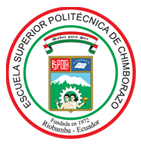ORGANIC CONTAMINATION OF THE CHAMBO RIVER IN THE WASTEWATER DISCHARGE AREA OF THE CITY OF RIOBAMBA
DOI:
https://doi.org/10.47187/perf.v2i20.32Keywords:
Chambo river, Chibunga river, Icomo, organic contaminationAbstract
The problem of water pollution is one of the great challenges for humanity. Therefore, its study and knowledge are needed, especially in places with little infrastructure that allows the treatment of wastewater, such as the case of direct dumping of wastewater in most of the Ecuadorean rivers. The purpose of this research is to determine organic contamination in a section of the chambo river, located in the province of Chimborazo-Ecuador, where it is discharged, without considering the wastewater from the city of Riobamba, as well as the contaminated waters from the chibunga river. For this study, the icomo index is applied for the assessment of organic pollution in rivers, based on the experimental determination of dissolved oxygen, bod and total coliforms. The measurements took place in a temporary space of 7 days in 7 sampling points. The study made it possible to verify that the river remains at a low level of organic contamination before the discharge of wastewater and that afterwards it was able to automatically purify the downstream waters due to the effect of the geomorphology and its flow
Downloads
References
United nations. Policy brief on Water quality. Ontario:; 2011.
United nations. World urbanization prospects: the 2014 revision, Highlights new york: department of Economic and social affairs; 2014.
Connor r, Renate a, Ortigara c, Koncagül E, Uhlenbrook s, Lamizana-Diallo bm, et al. The united nations World Water development report 2017: Wastewater, the untapped resource. Paris:; 2017.
Lamizana-Diallo bl, Salinas A, Tonda E, Rabbiosi L, milà i canals l, spencer d. preventing and reducing wastewater generation and pollution loads at the source. in unEsco. Wastewater: the untapped resource. Paris: United Nations Educational, Scientific and Cultural Organization; 2017. p. 198.
Martinez de Bascaran G. El índice de calidad del agua. Ingeniería química. 1976; p. 45-49.
Cude C. Oregon water quality index a tool for evaluating water quality management effectiveness. JaWra
Journal of the american Water resources association. 2001; 37(1): p. 125-137.
Ramirez A, Restrepo R, Viña G. cuatro índices de contaminación para caracterización de aguas continentales. Formulaciones y aplicación. Ct&f-ciencia, tecnología y futuro. 1997; 1(3): p. 135-153.
Valdes J, Samboni N, Carvajal y. Desarrollo de un indicador de calidad de agua usando estadística aplicada, caso de estudio: subcuenca Zanjón oscuro. Tecnológicas. 2011 ;(26): p. 165-180.
Jaque castellano E, guerrero p, lucia c. Evaluación del índice de calidad de agua (ica) de la microcuenca del río chibunga, en variaciones estacionales, provincia de chimborazo–ecuador, durante el periodo 2014. 2015.
Samboni nE, reyes t. a, Carbajal E. y. Aplicación de los indicadores de calidad y contaminación. Ingeniería y competitividad. 2011; 13(2): p. 49-60.
Mendoza B. characterization of real aquifers using hydrogeophysical measurements. An application to the chambo aquifer (Ecuador). 2015 Marzo.
Downloads
Published
How to Cite
Issue
Section
License

This work is licensed under a Creative Commons Attribution-NonCommercial 4.0 International License.


























